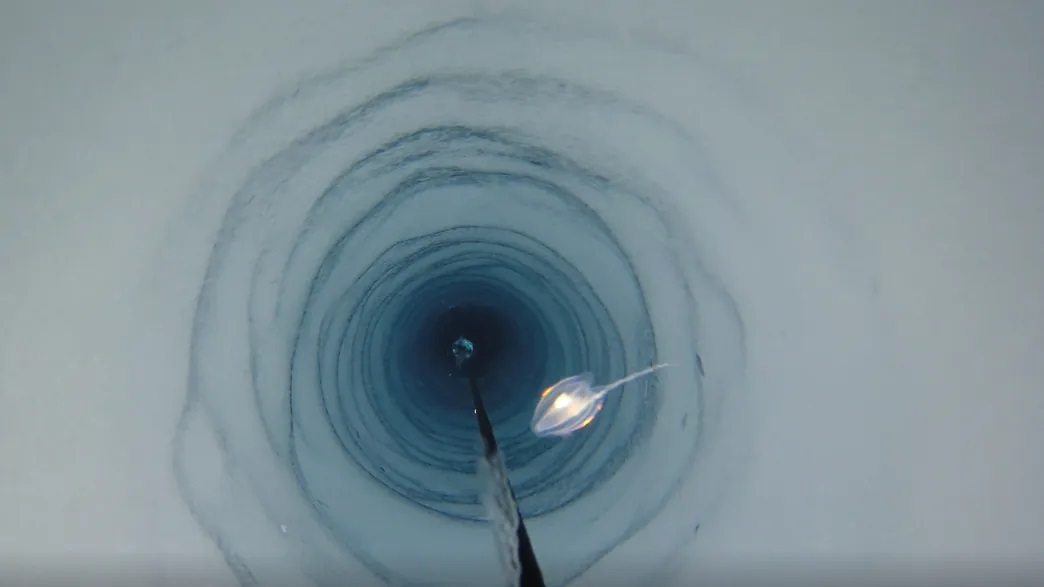
Strange life forms have been discovered deep beneath Antarctica, trapped beneath an ice shelf 260 kilometers (161 miles) from the open ocean.
The creatures were discovered by the British Antarctic Survey during an attempt to gather a sediment core sample from under the ice shelf in the Filchner-Ronne Ice Shelf. While tunneling around 900 meters (2952 feet) into the ice shelf, their drill suddenly hit a boulder. Even more unexpectedly, a camera attached to the drill revealed that a community of creatures were latched onto the rock (picture below).

The community of marine organisms are stationary animals similar to sponges but potentially belong to several different unknown species. As the researchers note in their new study, published in the journal Frontiers in Marine Science, the discovery breaks many of the rules on what we know about life on Earth.
Previous expeditions have discovered some small mobile scavengers and predators in similar Antarctic habitats, such as fish, worms, and krill. This new discovery, however, is especially surprising given that the animals are sessile, which means they are fixed and not mobile. These stationary creatures are typically filter feeders that rely on food falling from the sky.
Furthermore, they live in complete darkness with temperatures of -2.2 °C, far from open water and sunlight. This community is estimated to be up to 1,500 kilometers (932 miles) upstream from the nearest source of photosynthesis, raising questions about how they obtain energy and nutrients.
“Our discovery raises far more questions than it answers, such as how they got there. What do they eat? How long have they stayed? In real life, how common are these boulders covered? Are these the same species found outside the ice shelf, or are they new? “And what would happen to these communities if the ice shelf collapsed?” Dr. Huw Griffiths, biogeographer and lead author of the British Antarctic Survey, asks in a statement.
“This is one of those fortunate accidents that pushes ideas in new directions and shows us that Antarctic marine life is incredibly special and amazingly adapted to a frozen world,” Dr Griffiths adds.
It’s possible that the organisms get their energy from somewhere else, like glacial melts or chemotrophic processes from methane seeps. To find out, the team will need to collect samples of these organisms, which will be no easy task given their remote location.
Ice shelves cover roughly one-third of Antarctica’s 5 million square kilometers of continental shelf, much of which remains unexplored. The discovery may imply that life beneath the ice shelf is more common than previously thought, as other recent studies have suggested. Scientists discovered bacteria colonies and other more complex life in Lake Mercer, a glacial lake beneath the West Antarctic ice sheet, in 2019.





